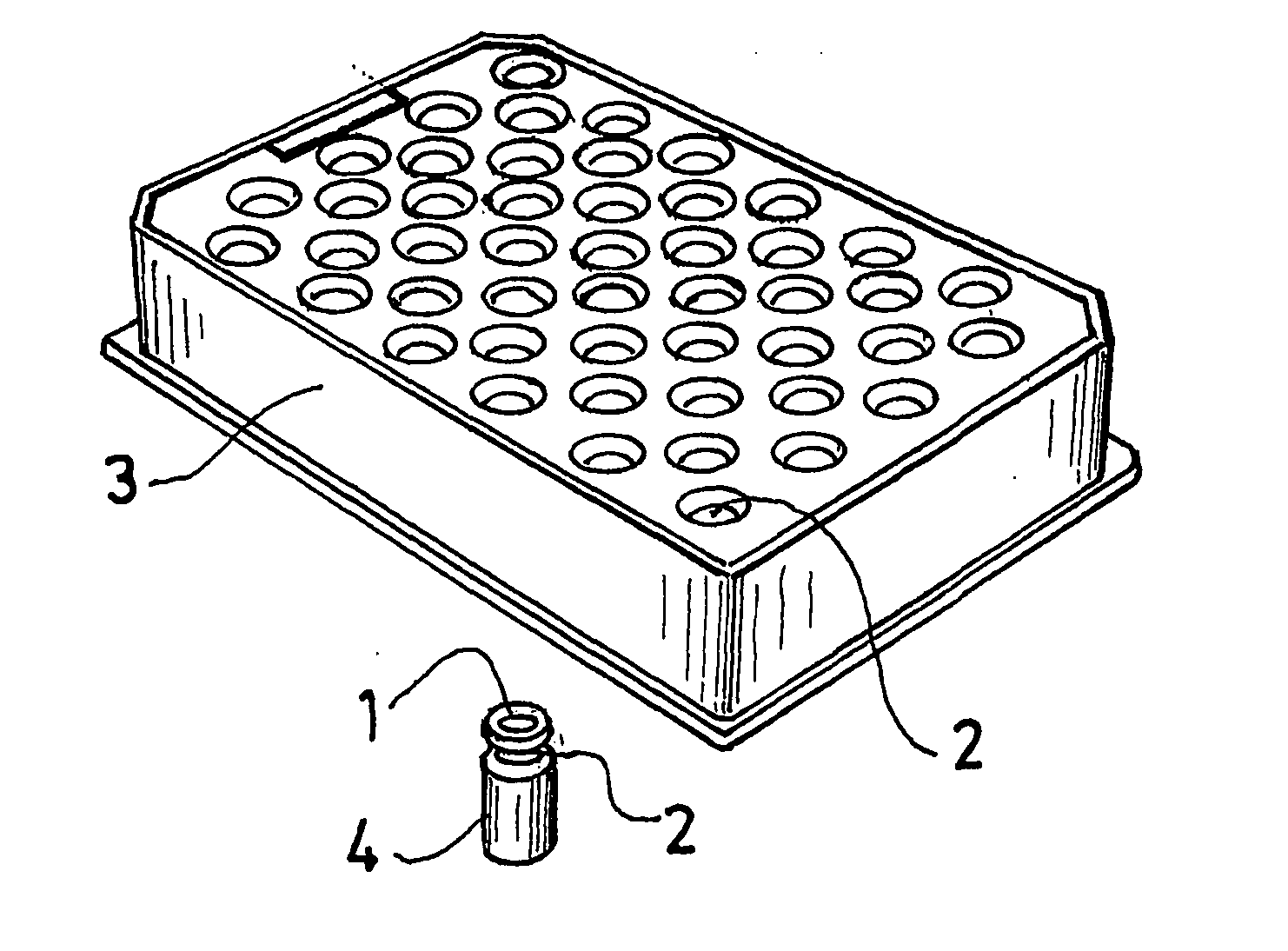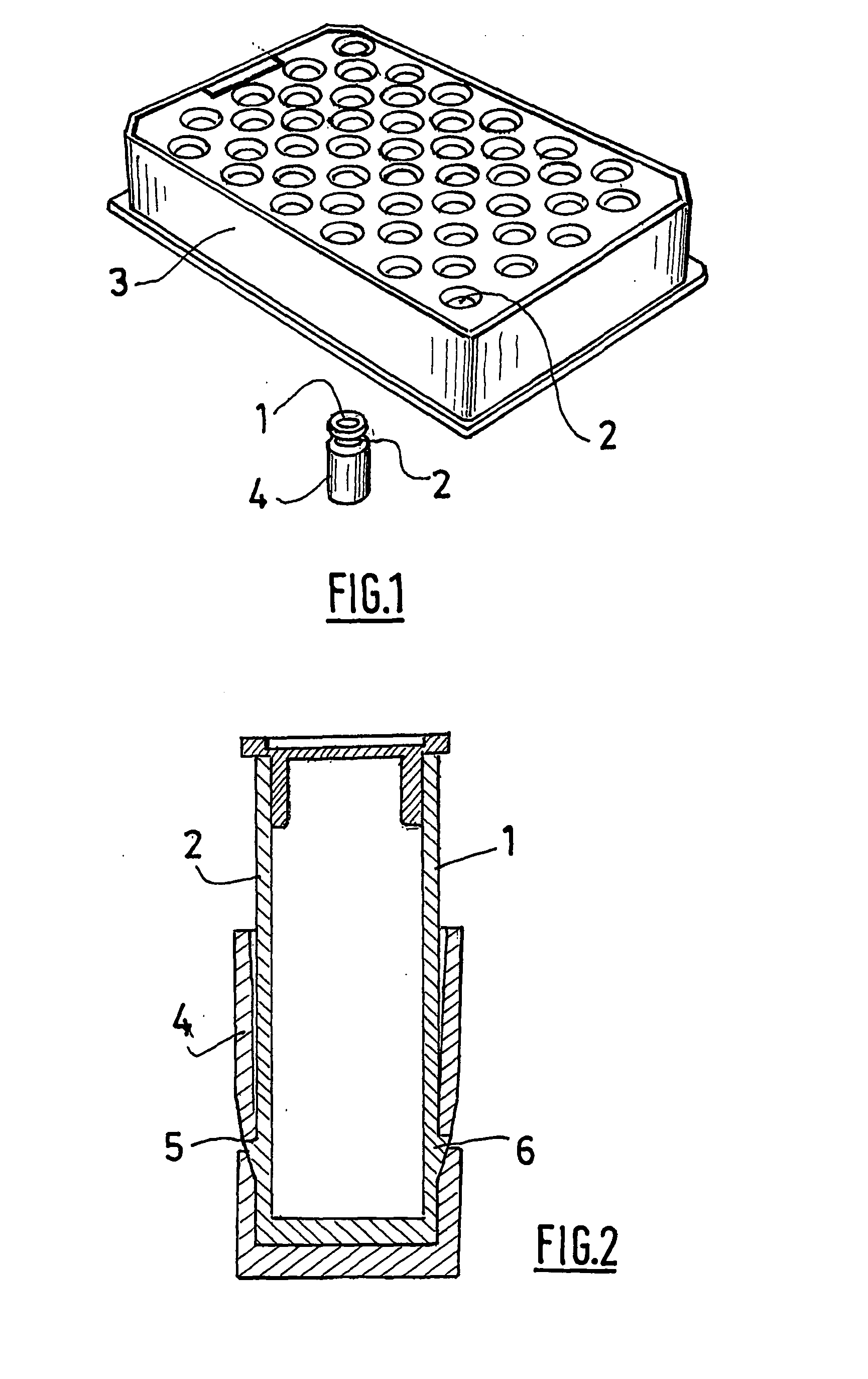Method for sequential identification of samples
a sampling and sequential identification technology, applied in the field of sampling sequential identification, can solve the problems of high cost, difficult handling of samples by machines, and several storage difficulties, and achieve the effects of simple and economical identification system, easy robotization, and convenient storage and identification of samples
- Summary
- Abstract
- Description
- Claims
- Application Information
AI Technical Summary
Benefits of technology
Problems solved by technology
Method used
Image
Examples
Embodiment Construction
[0017]While referring to the Figures, a method for storing and using a plurality of samples 1 is described. When a sampling is made, the sampled product is divided into several samples which are, each, placed on a support 2. Such conventional step is also called making aliquot portions. The support 2 can have any shape adapted to the sample which it is intended for. For example, this can be a cup, as shown in the Figures, glass plates on which a drop or a slice of the sampled product is spread or any other appropriate shape.
[0018]The support 2 is detachably associated to a block 3, thus forming a “one-piece” device comprising a plurality of other supports 2 of the same type. The filling of several supports 2 by samples can thus be easily carried out in an automated and quick way, the block 3 having for example dimensions which make it easy to grip for a robot. The block 3 can for example be of the same type as the one described in document FR-2 780 903. This means that according to ...
PUM
 Login to View More
Login to View More Abstract
Description
Claims
Application Information
 Login to View More
Login to View More - R&D
- Intellectual Property
- Life Sciences
- Materials
- Tech Scout
- Unparalleled Data Quality
- Higher Quality Content
- 60% Fewer Hallucinations
Browse by: Latest US Patents, China's latest patents, Technical Efficacy Thesaurus, Application Domain, Technology Topic, Popular Technical Reports.
© 2025 PatSnap. All rights reserved.Legal|Privacy policy|Modern Slavery Act Transparency Statement|Sitemap|About US| Contact US: help@patsnap.com


